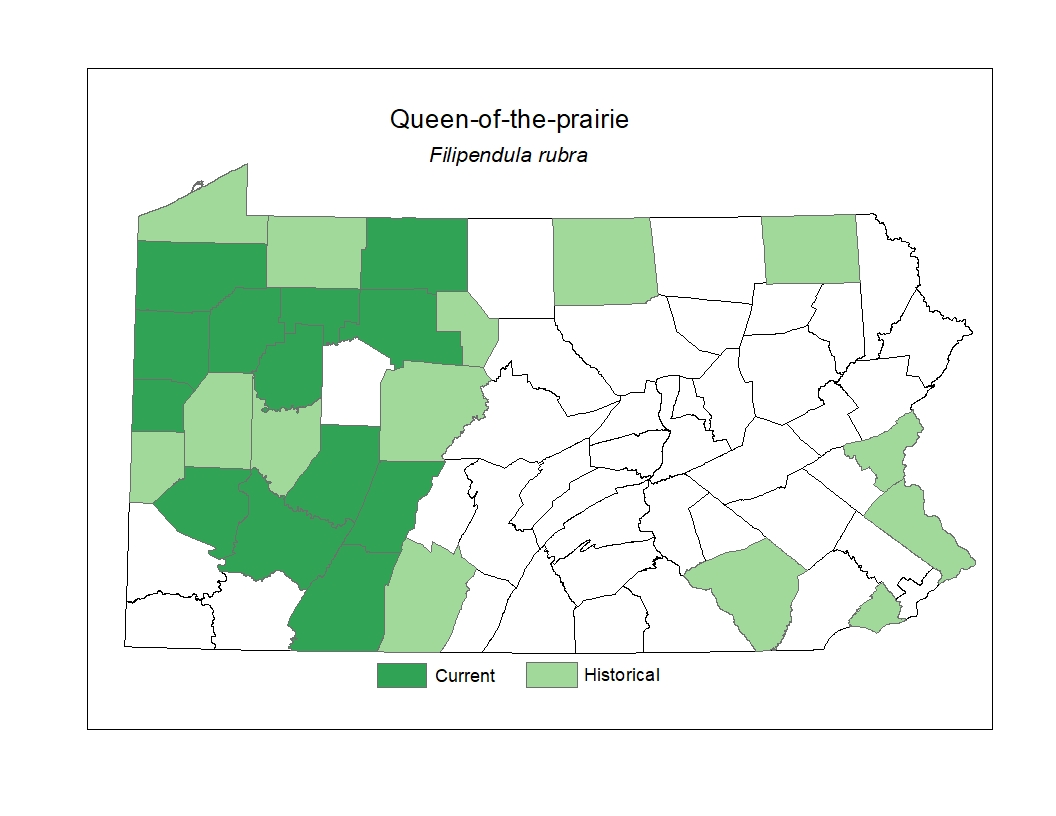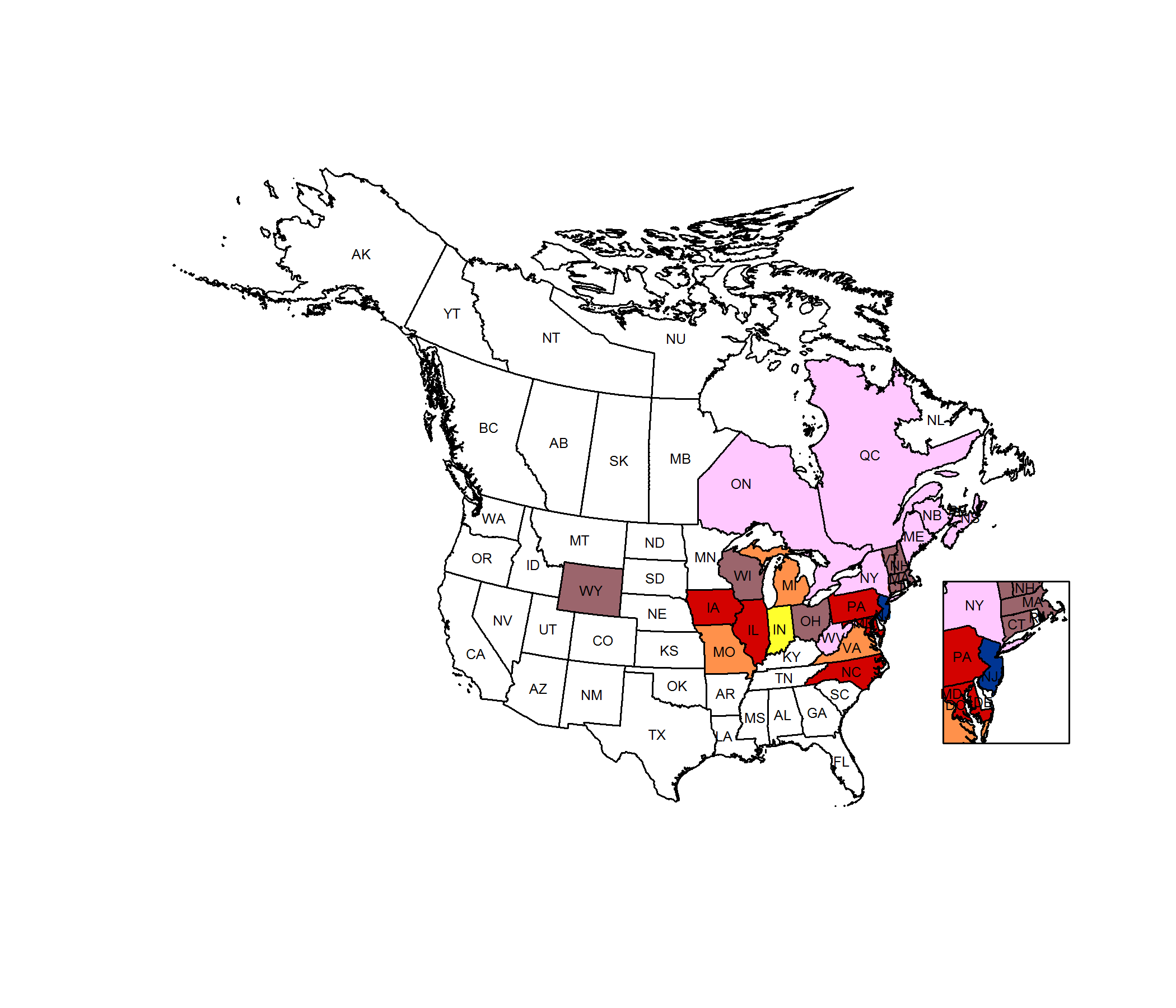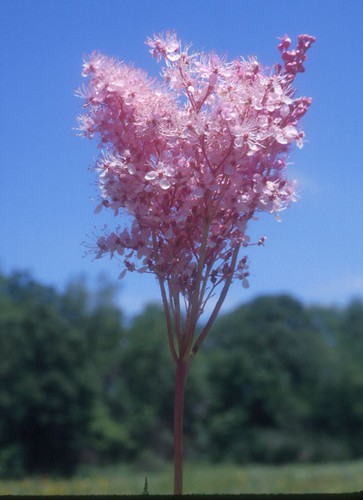 Species Factsheets
Species Factsheets
Filipendula rubra
Queen-of-the-prairie
State Status: TU
PBS Status: Tenatively Undetermined (TU)
Federal Status:
Global Rank: G4G5
![]() rank interpretation
rank interpretation
State Rank: S1S2
Did You Know?
The root of this species is rich in tannin which can be used for treating diarrhoea, dysentery and bleeding.
Description
Queen-of-the-prairie (Filipendula rubra) is a member of the rose family that spreads clonally by the growth of underground stems called rhizomes as well as reproducing sexually. Individual ramets, or members of a clone, grow from 1-2m tall; a single clone may spread over scores of square meters.
Rank Justification
Critically imperiled in the nation or state because of extreme rarity (often 5 or fewer occurrences) or because of some factor(s) such as very steep declines making it especially vulnerable to extirpation from the state.
Habitat
Queen-of-the-prairie grows mainly in fens, calcium-rich peat-producing wetlands, but clones may also be found in wet woodlands and grassland seeps.
Survey Dates
Flowers June - August
Distribution

Threats
Queen-of-the-prairie is rare because its preferred habitat, fens, are generally rare. The species also suffers from potential reproductive limitations – some populations produce very little viable seed. This may be because queen-of-the-prairie populations are often composed of only a handful of clones, which reduces their genetic variability.
Management
Queen-of-the-prairie populations will benefit greatly from protection of their wetland habitats, which are often destroyed or fragmented by human development. Forest management practices can also be altered to allow more natural disturbances to create early successional habitat, and existing populations should be protected from collection, which may be a minor concern. Efforts to re-establish queen-of-the-prairie populations in unoccupied habitat should make use of seed or transplant material taken from a wide variety of parent clones to ensure that new populations will have sufficient genetic diversity to produce viable seed.
Conservation Status Map

NatureServe. 2017. NatureServe Explorer: An online encyclopedia of life [web application]. Version 7.1. NatureServe, Arlington, Virginia. Available https://explorer.natureserve.org.
https://practicalplants.org/wiki/Filipendula_rubra
- NatureServe. 2018. NatureServe Explorer: An online encyclopedia of life [web application]. Version 7.1. NatureServe, Arlington, Virginia. Available at https://www.natureserve.org/explorer
- Pennsylvania Natural Heritage Program. 2018.
- Rhoads, A.F. and W.M. Klein, Jr. 1993. The Vascular Flora of Pennsylvania. American Philosophical Society, Philadelphia, Pennsylvania. Rhoads, A.F. and T.A. Block.
- 2007. The Plants of Pennsylvania: An Illustrated Manual. 2nd edition. University of Pennsylvania Press, Philadelphia, Pennsylvania.







